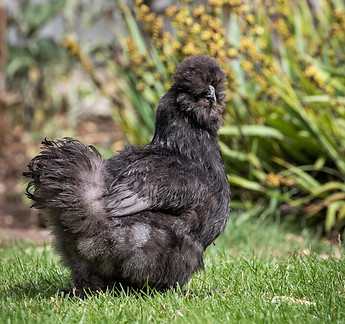
Wild Card
Episodes 125-129
Ever wonder what the animals we talk about look like, or which episodes cover what animals? Find the answers you seek below! Our episode guides give a brief breakdown of each episode as well as links to the articles we discuss, our sources, and of course, pictures of the animals!
All pictures are either Public Domain or Stock photos unless otherwise noted.
Unfortunately we are not able to provide photos for every animal, especially the more obscure ones, due to not being able to obtain photos which don't violate copyright law. For any animals lacking a photo we remind you that Google is your friend.
Episode 125: Goth Birds and Dangerous Beauties
The first Wild Card episode kicks off with Casey sharing about preparing for a USDA (United States Department of Agriculture) inspection at work, while Ali recounts her less than magical trip to Disneyland while wearing a boot for her injured foot. Casey goes on to bring more awareness to Save Giraffes Now, a nonprofit organization focused on helping giraffes facing a silent extinction, and Ali shares an article about platypuses returning to the Australian Royal National Park for the first time in half a century. The pair then discuss their Favorite Pretty Looking Venomous or Poisonous Animals, the Eastern Coral Snake and the Poison Dart Frog (specifically Ranitomeya amazonica). Casey then talks about the gothic looking Dracula Parrot (or Pesquet’s Parrot), before they close out the episode with the final round of Taboo.
Pictured from top to bottom: Dracula Parrot, Eastern Coral Snake, and Poison Dart Frog (Ranitomeya amazonica).

Sources and Links
SGN_2022_AnnualReport.pdf (savegiraffesnow.org)
Species Profile: Eastern Coral Snake (Micrurus fulvius) | SREL Herpetology (uga.edu)
Eastern Coral Snake | National Geographic
Eastern Coral Snake - Facts, Diet, Habitat & Pictures on Animalia.bio
Eastern Coral Snake (herpsofnc.org)
Ranitomeya amazonica — Ranitomeya
Ranitomeya amazonica (iucnredlist.org)
Ranitomeya amazonica 'Iquitos' (Captive Bred) - Amazonian Poison Frog (joshsfrogs.com)
WCS Papua New Guinea > Wildlife > Pesquet's Parrot
The Dracula parrot is intimidating - Australian Geographic
Pesquet's Parrot - Facts, Diet, Habitat & Pictures on Animalia.bio


Episode 126: X-Men Like Abilities
Casey begins the episode by discussing his most recent trip to the Wild Animal Park with his sister, while Ali laments Disney+ taking down National Geographic’s Super/Natural, preventing her from rating the next episode in the series. Instead she shares an article about two albino echidnas recently spotted in New South Wales Australia. Casey then talks about Proyecto Titi, an organization that’s working to save cotton-top tamarins in Columbia, and Ali shares another article from Australia about Brush-Tailed Bettongs, a ‘mini kangaroo on steroids’ making a comeback in South Australia. They continue on to discuss their Favorite Marine Animal Not Already Covered on the Podcast, the Blue Blubber Jellyfish and the West Indian Manatee, before Casey discusses the superhero-like Animal of the Week, the Iberian Ribbed Newt. The episode concludes with Casey challenging Ali to the final round of ‘Leopardy’.
Pictured from top to bottom: Iberian Ribbed Newt, Blue Blubber Jellyfish, and West Indian Manatee.
Sources and Links
National Aquarium - Blue Blubber Jelly
Sea Wonder: Blue Blubber Jelly | National Marine Sanctuary Foundation
Blubber jelly | Animals | Monterey Bay Aquarium
West Indian Manatee | National Wildlife Federation (nwf.org)
Manatee (Trichechus manatus) | U.S. Fish & Wildlife Service (fws.gov)
Manatee Facts - Save the Manatee Club
Trichechus manatus (American Manatee) (iucnredlist.org)
Iberian ribbed newt - Facts, Diet, Habitat & Pictures on Animalia.bio
SPANISH RIBBED NEWT (reptilerapture.net)
Caudata Culture Species Entry - Pleurodeles waltl
Pleurodeles waltl (Sharp-ribbed Salamander) (iucnredlist.org)



Episode 127: Underwater Oddities And Unexpected Swamp Residents
Casey kicks things off by talking about his most recent trip to the San Diego Zoo with his family, while Ali shares that she has felt like crap for the past week and discovered she might be allergic to her cat. Casey goes on to share about a recent update to the Animal Welfare Act, which will now include birds, not just mammals, in USDA inspections. Ali then shares an article about an ‘elephant graveyard’ being discovered in Florida, specifically believed to be gomphotheres from about 6 million years ago. The duo continue on to talk about their Favorite Weird Looking Sea Creatures, the Chambered Nautilus and the Red-Lipped Batfish. Casey then discusses the final Listener’s Choice Animal of the Week, the Sitatunga, before wrapping up the episode with a challenge where they must name as many animals with a region in their name (i.e. North American, Atlantic…) as they can within the allotted time.
Pictured from top to bottom: Sitatunga, Chambered Nautilus, and Red-Lipped Batfish.

Sources and Links
USDA APHIS | AWA Standards for Birds
Chambered nautilus | Animals | Monterey Bay Aquarium
Chambered Nautilus | NOAA Fisheries
Chambered Nautilus | Online Learning Center | Aquarium of the Pacific (aquariumofpacific.org)
Chambered nautilus (biologicaldiversity.org)
Ogcocephalus darwini (Galápagos Batfish) (iucnredlist.org)
Red-lipped Batfish - Galapagos Conservation Trust
Why Do Red-Lipped Batfish Have Red Lips? - Ocean Conservancy
Shorefishes - The Fishes - Species (si.edu)
Sitatunga | African Wildlife Foundation (awf.org)
Tragelaphus spekii (Sitatunga) (iucnredlist.org)
Sitatunga | Smithsonian's National Zoo

By Profberger at English Wikipedia, CC BY 2.5, https://commons.wikimedia.org/w/index.php?curid=6428108
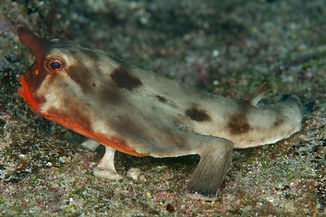
Episode 128: Superb Birds And A Deceptive Serpent
Casey starts off the penultimate episode sharing about reading one of his new books about alligators and doing more work on Zooniverse, a site that allows anyone to assist scientists with various projects, and Ali talks about her recent experience going to the Wild Animal Park in her boot. Casey then shares some disturbing news about platypuses being at risk of extinction in parts of Australia due to wildfires and other environmental crises, while Ali highlights the final dog breed of the podcast, the Glen of Imaal Terrier. They go on to discuss their Favorite Wild Cards - Any Bird Not Already Discussed, the Superb Lyrebird and the Nuttall’s Woodpecker, before moving on to the deceptive Animal of the Week, the Spider-Tailed Horned Viper. Casey closes out the episode with a challenge for Ali called 3 to 1.
Pictured from top to bottom: Spider-Tailed Horned Viper, Superb Lyrebird, Nuttall's Woodpecker, and Glen of Imaal Terrier.
Sources and Links
Australia fires: Platypuses at risk of extinction due to Australia's devastating drought - CBS News
https://www.akc.org/dog-breeds/glen-of-imaal-terrier/
Superb Lyrebird - The Australian Museum
Superb Lyrebird Fact Sheet | Blog | Nature | PBS
Superb lyrebird - Facts, Diet, Habitat & Pictures on Animalia.bio
Menura novaehollandiae (Superb Lyrebird) (iucnredlist.org)
Nuttall's Woodpecker Overview, All About Birds, Cornell Lab of Ornithology
Nuttall's Woodpecker | Audubon Field Guide
Nuttall's Woodpecker | National Geographic
Nuttall's Woodpecker — Santa Clara Valley Audubon Society (scvas.org)
Dryobates nuttallii (Nuttall's Woodpecker) (iucnredlist.org)
Spider-tailed horned viper | Fun facts about the strange snake | BBC Science Focus Magazine
Meet the Snake That Hunts Birds With a Spider On Its Tail | Discover Magazine
Pseudocerastes urarachnoides | The Reptile Database (reptarium.cz)
Spider-tailed Horned Viper : Possibly the Coolest Snake in the World – The Wild Episode
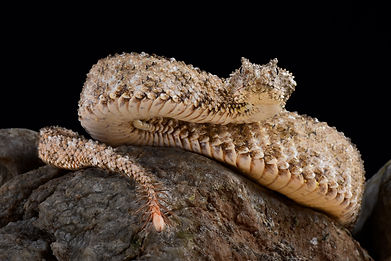



Episode 129: The Animal Addicts Podcast Finale!
The final episode of the podcast begins with Casey talking about his trip to the Del Mar Fair with his family, and Ali confirming that Disney+ has indeed removed National Geographic’s Super/Natural among other shows from their platform. Due to this, she reports on AppleTV’s Big Beasts: Giant Otter, giving it a rating of Mostly Safe. Finally, she shares about her discovery that an artist she already follows on Twitter (@AaronBlaiseArt) is not only an animator, as his bio states, but was one of the animators for classic Disney movies including The Lion King and Pocahontas. She made this discovery while looking up Disney-style art tutorials on Youtube and stumbling across multiple videos featuring him and his work. Casey then provides some more information on AAZK (the American Association of Zoo Keepers), while Ali highlights the final breed of the podcast, the Silkie Chicken. The pair continue on to talk about their Favorite Wild Cards - Whatever you Want, the Hispaniola Solenodon and the Southern Viscacha, before turning their attention to the final Animal of the Week, the Brown-Throated Three-Toed Sloth. The episode, and podcast, concludes with Ali challenging Casey to a Podcast Wrap Up quiz spanning the entire podcast since it began on August 7th, 2020.
Pictured from top to bottom: Brown-Throated Three-Toed Sloth, Hispaniola Solenodon, Southern Viscacha, and Silkie Chicken.
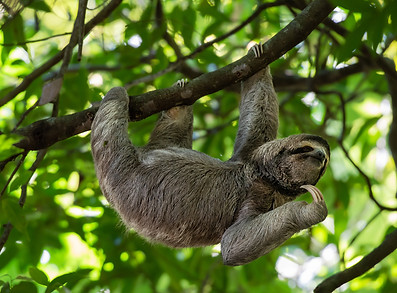
Sources and Links
https://www.thehappychickencoop.com/chicken-breeds/
https://www.thehappychickencoop.com/silkie-chicken/
ADW: Solenodontidae: INFORMATION (animaldiversity.org)
ADW: Solenodon paradoxus: INFORMATION (animaldiversity.org)
Solenodons: No Bark But Plenty of Venomous Bite | Science| Smithsonian Magazine
Hispaniolan Solenodon - Facts, Diet, Habitat & Pictures on Animalia.bio
Southern Viscacha - Facts, Diet, Habitat & Pictures on Animalia.bio
ADW: Lagidium viscacia: INFORMATION (animaldiversity.org)
IUCN Red List of Threatened Species
Brown-Throated Three-Toed Sloth - Facts, Diet, Habitat & Pictures on Animalia.bio
Brown-Throated Three-Toed Sloth | Rainforest Alliance (rainforest-alliance.org)
Brown-throated three-toed sloth – The Dallas World Aquarium (dwazoo.com)
Brown-throated Sloth: Species in World Land Trust reserves
Bradypus variegatus (Brown-throated Sloth) (iucnredlist.org)
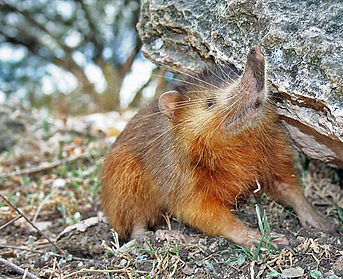
By Seb az86556 - Own work cropped from Hispaniolan Solenodon.jpg, CC BY-SA 3.0, https://commons.wikimedia.org/w/index.php?curid=15267645

